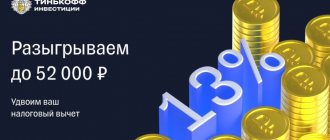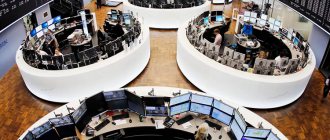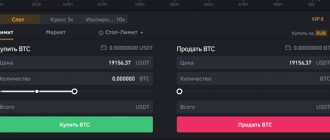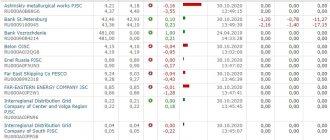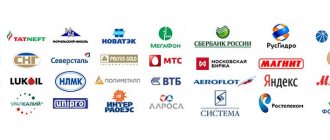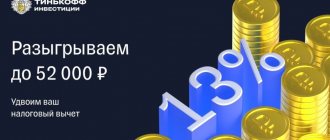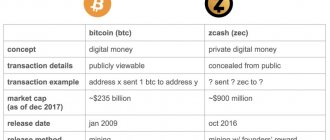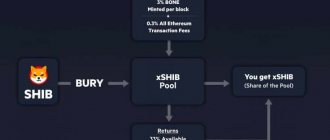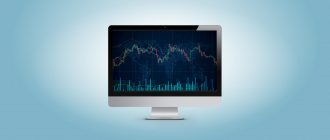Greetings, dear reader.
When we mention the words stock exchange, trading and investing, most of us get the impression that we are talking about something inaccessible. Actually this is not true!
Today I’ll tell you what Russian stock exchanges are and why they are needed. We’ll also talk about projects that have nothing to do with the stock market or investments. After reading the article to the end, you will be convinced that the principle of operation of exchanges is quite simple; everyone can invest in securities in Russia.
Brief history of appearance in Russia
In 1703, by decree of Peter 1, the first Russian stock exchange was organized in St. Petersburg. At first, trading was carried out exclusively on goods, but with the advent of securities, stock transactions began to be carried out on it.
By the beginning of the 20th century, there were 7 such sites in the Russian Empire. However, the communist regime did not provide for the existence of private property and a stock market. Therefore, with the advent of Soviet power, they were all liquidated.
The current stage of development of stock trading in Russia began in 1991. With the transition to a market economy, platforms for stock trading began to appear in different cities of Russia. Most of them have not been in operation for a long time, but those that began their work precisely then have also been preserved.
Speculation
Stock futures are an excellent tool for making profits: you can play on the rise or fall in stock prices in order to make a profit.
For example, you expect that in the future the shares of a certain company will increase in price - then you need to buy futures on shares of this company. If, on the contrary, you expect that the shares will fall in price, then you enter into a contract to sell futures.
The advantage of performing transactions on the futures market is also that when concluding a transaction on a futures contract, the investor contributes only a small fraction of the value of the asset (guarantee collateral of about 10-20%).
Consequently, the investor saves on transaction costs.
For example, you want to buy stock futures, the total contract value is 100,000 rubles.
However, you will not have to pay the entire amount of the transaction, but only the amount of the guarantee, which is 15,000 rubles (this is what the broker will write off from your account). That is, having spent only 15,000 rubles, you actually bought a contract for 100,000 rubles.
List of the largest exchanges today
The activities of modern stock exchanges in Russia are regulated by the Federal Law “On Organized Trading”.
Moscow Exchange MICEX RTS
The Moscow Exchange was formed through the merger of the MICEX and the RTS, the largest exchanges in Russia in the early 2000s. The created holding immediately became the leader in the Russian Federation in terms of trading volume and has remained so for 8 years (RUB 58.9 trillion in January 2022). There is a wide range of financial instruments: stocks, bonds, futures, currencies and even grain.
St. Petersburg Exchange FBSPb
The site was founded on January 31, 1991, even before the collapse of the USSR. Today it is the oldest exchange in the Russian Federation. There are dozens of types of goods from various industries, as well as securities of foreign issuers.
For a long time, this platform was the only one in Russia where Gazprom shares were presented. All shares of the S&P500 index are listed on the FBSPb. In total, 742 securities are presented here (as of February 17, 2019).
Currency exchange in St. Petersburg
Unlike the previous platform, this exchange specializes in Russian financial instruments. There is active trading in securities, currencies and some other assets.
Moscow FB
In the early 2000s, the MFB was one of the leading Russian platforms. However, in 2013, it was reorganized, which resulted in a change in specialization. Today the company is engaged in providing clearing services, which was discussed above.
Siberian Interbank Currency Exchange SICEX
In the 1990s, SICEX was the leader in exchange trading in the eastern region of Russia. However, with the development of technology and the advent of Internet trading, the popularity of regional trading organizers began to decline. Now the site has turned into a branch of the Moscow Exchange and is promoting its services in Siberia.
Nizhny Novgorod Currency and Stock Exchange NVSE
Another regional center, the NVSE, suffered a similar fate. Since 2007, it has been called Regional Exchange CJSC. Its tasks include actions to attract customers (including through educational programs) and promoting the Moscow Exchange brand in the region.
How the auction works
The Moscow Exchange operates in 5/2 mode, and the morning begins with an early session on the foreign exchange market. The trading session for currencies starts at 7:00 Moscow time. From 9:50 to 9:59 there is an opening auction - bids (orders) of participants for purchase and sale are collected. This helps determine the prices of the first transactions and eliminates manipulation at the start of trading. The main session starts at 10:00, and the first half of the day is intense - traders and investors react to important news that got caught in the information noise on the eve of the start of trading.
Closer to lunch, as a rule, stock prices stabilize. But the second half of the day depends on foreign quotes.
Most instruments are traded in rubles, even when purchasing shares of foreign companies. Despite this, dividends on American securities are paid in US dollars.
Previously, trading ended at 18:49:59, but since June 2022, the Moscow Exchange has introduced an additional evening trading session, during which it is possible to enter into purchase and sale transactions for shares included in the list approved by the Moscow Exchange. Now you can buy or sell some securities until 23:50.
List of shares admitted to evening trading
The Moscow Exchange can turn on the discrete auction mode if the price of any share included in the Moscow Exchange index is unstable and changes by 20% or more within 10 minutes. The exchange suspends trading for half an hour to collect limit orders. Based on them, the market price will be re-formed. The same thing happens if the Moscow Exchange index rises or falls by 15% within 10 minutes. If this happens three times in one day, trading will stop until the next day.
Which exchange is the main one in the Russian Federation?
This status is not provided for at the legislative level. There are several stock trading platforms in Russia; each issuer has the right to choose where to place its securities.
The largest exchange in Russia today is the Moscow Exchange. Having absorbed regional sites, it was able to concentrate resources from all over the country.
The MICEX and RTS indices still remain the most important indicators of the Russian stock market.
Activities of RTS
The RTS currently operates several trading platforms, both exchange-traded and over-the-counter, as well as a derivatives market. Let's look at each of them in detail.
Stock market
There are 4 platforms within the RTS stock market: RTS Classic, RTS Standard, RTS Start and the T+0 market.
Classic securities market
The RTS Classic market is the oldest organized platform for trading securities in Russia (it has been operating since the foundation of the exchange in 1995).
Shares of more than 500 of the largest Russian companies, as well as bonds and shares of a number of investment funds are traded here. This gives investors the opportunity to use various investment strategies, which are mainly divided into active and passive.
Active investment strategies are typical for investors who seek to get the maximum return on their investments.
These are risky strategies based on constant monitoring of the market situation and making operational decisions to buy or sell securities based on changes in the situation on the stock exchange.
An investor who uses this strategy constantly changes the set of assets that are in his portfolio, trying to guess the most profitable combination. This strategy is not suitable for beginners, as it is associated with great risk and requires the trader to have certain knowledge and experience in conducting active trading.
For conservative and novice investors, a passive investment strategy is more suitable. In this case, the goal is to save capital and obtain a certain guaranteed income with moderate risk.
This strategy involves the formation of a securities portfolio from low-risk assets, while the composition of the portfolio, as a rule, does not change for a long time.
Of course, the profitability when using such a strategy is lower than when using active management, but the risks are minimal.
Let us note some features of the classic stock market:
- trading is carried out without preliminary 100% deposit of funds to carry out the transaction (that is, the investor is not required to transfer his funds for storage as a guarantee of the transaction);
- You can freely choose the date and payment method;
- the possibility of making payments in foreign currency is allowed;
- trading is carried out through the RTS Plaza electronic trading terminal.
Market T+0
The T+0 market was created in 2004 as a platform on which shares of both leading Russian enterprises and companies of the so-called “second echelon” are traded (this segment accounts for up to 50% of all securities sold).
Bonds and investment shares are also traded here. In total, the T+0 market offers more than 400 types of securities.
This market is ideal for private investors who can trade through the services of intermediary companies accredited by the exchange.
Trading is carried out through an online trading system in an anonymous mode based on the Order-Driven Market principle (continuous double auction of counter orders) with 100% pre-deposition (reservation) of assets using the “delivery versus payment” technology. All payments are made on the day of the transaction only in rubles.
Those. for example, an investor wants to buy shares of a certain company, submits an anonymous application indicating the number of shares and the price. In this case, the funds for completing the transaction are “frozen” in the buyer’s account until the transaction is completed.
When a counter order appears with the same conditions, the transaction is carried out automatically. This mechanism is very convenient for investors, as it is quite simple and does not require any complex actions.
Share market RTS Standard
RTS Standard is the most modern and youngest stock market in Russia (operates since 2009). It uses world-class advanced exchange technologies.
This market is aimed at both large professional players, institutional investors and banks, as well as private investors. This platform is excellent for making speculative transactions in securities.
Features of the RTS Standard market:
- use of the most modern technologies in the field of securities trading;
- partial preliminary deposit of funds in accounts;
- payments only in rubles;
- carrying out transactions in the form of an anonymous auction, similar to the T+0 market;
- it is possible to combine stock trading on the Standard market with futures trading on the RTS FORTS derivatives market.
Market RTS START
RTS START is part of the exchange securities market of the RTS group. In this market segment, securities of small and medium-sized companies are traded.
Securities that are traded in the RTS START segment are also admitted to trading on the RTS exchange. This is a new direction in the development of the modern stock market in Russia.
This market is designed to stimulate the attraction of investment in the real sector of the economy, as well as to allow small but actively developing enterprises to increase the amount of capital attracted.
Why are Russian stock exchanges needed?
The main function of Russian stock exchanges is to ensure the functioning of a civilized stock market on the territory of the Russian Federation. Sales and purchase transactions, along with private property, are the basis of a market economy. Russian stock exchanges allow you to make such transactions quickly and safely.
Their tasks include:
- Ensuring openness of trading in Russia and access to it for as many investors as possible.
- Determination of the equilibrium market price of traded securities. Based on the share price of any company, you can calculate its capitalization.
- Attracting free funds from the population and legal entities.
- Developing and monitoring compliance with ethical trading standards and ensuring transaction security.
FORTS derivatives market
The FORTS market is the largest Russian platform for trading derivative securities (futures and options).
First, let's take a closer look at what futures and options are and how they differ.
Futures are a futures contract that secures an obligation to buy or sell some asset or commodity in the future at a set time at a predetermined price.
An option is a fixed-term contract that secures the right to buy or sell a certain asset (commodity) for a certain period of time at a predetermined price.
In principle, these papers are similar, but there is one significant difference. The option holder is not obligated to make a trade after the option expires. Whereas the futures holder will be obliged to complete this transaction in any case. To make it clearer, consider a simple example.
Imagine that a year ago you bought two securities:
- an option allowing you to buy 1000 shares at 50 rubles per share;
- a futures contract that obliges you to sell 1000 shares at 20 rubles per share.
Both papers are about to expire. At the same time, you know that the shares of both companies have increased in price and cost 100 and 60 rubles per share, respectively.
Obviously, the option is beneficial to you, since you can buy 1000 shares at a price 2 times lower than the market price and make a good profit.
This means that you present it to the seller and receive 1,000 shares for only 50,000 rubles, which, by selling them at the market price, will make a profit of 50,000 rubles.
Futures, on the contrary, are not profitable, since you will have to sell 1000 shares at a price 3 times lower than the market price. That is, you will receive only 20,000 rubles for the transaction, although you could receive 60,000 rubles.
If it were the other way around, and you had a future to buy 1,000 shares of Alpha and an option to put 1,000 shares of Beta, all other things being equal, you would be a winner.
Goals and objectives of currency exchanges
The main task of the currency exchange is not to obtain high profits, it is to mobilize temporarily free foreign exchange resources, redistribute through market methods from one industry and restore the actual market rates of national and foreign currencies, subject to fair trade laws.
The direct purpose of the currency exchange is to determine the exchange rate, which is the value of foreign currency. The development of communication systems, the general abandonment of the gold standard in the process of abolition of the Bretton Woods monetary system, the evolution of the trend of economic globalization leads to a decrease in the role of the national currency exchange. Its place is eventually taken by the global 24-hour Forex currency market.
Are you an expert in this subject area? We invite you to become the author of the Directory Working Conditions
Main stock indices of the Moscow Exchange
Latest data 18:50:00:
| Meaning | |
| 1 787,93 | |
| Opening | 1 745,21 |
| Maximum | 1 792,48 |
| Minimum | 1 745,21 |
| Trading volume, rub | 44 900 362 749 |
| Capitalization, rub | 8 384 589 494 580,7 |
| Currency | RUB |
| 2,38% | |
| Previous closure | 1 746,35 |
| Max. in a year | 1 873,53 |
| Min. in a year | 1 569,61 |
| Change since the beginning of the month, % | 0,83% |
| Change year to date, % | 1,51% |
| Divider | 4 689 729 104,0986 |
| Tatnft 3ao | 340,55 | 7,28% | 18:48:31 | |
| 2 | NKNKh JSC | 47,5 | 5,09% | 18:47:58 |
| 3 | Surgnfgs | 38,12 | 4,45% | 18:49:52 |
| 4 | ALROSA JSC | 68,37 | 4,3% | 18:49:57 |
| 5 | Yandex clA | 1 054 | 4,1% | 18:48:42 |
| Moscow Exchange | 92,3 | -7,33% | 18:49:48 | |
| 2 | MMK | 19,15 | -2,32% | 18:48:50 |
| 3 | LSR JSC | 604 | -1,71% | 18:49:37 |
| 4 | AGRO-gdr | 1 096 | -1,26% | 18:48:34 |
| 5 | TMK JSC | 52 | -1,23% | 18:47:28 |
If we talk about the dynamics of the MICEX index (as well as the Russian stock market itself), then, as can be seen in its chart, over the past 6 months it reached its historical maximum at the level of 1875 points, followed by a powerful downward trend. The current rebound in the market is not any long-term movement, and even if the level of the previous peak is reached, there will be a downward reversal, with a very possible achievement of the levels of 8 years ago.
Indicative is the fact that shares of the exchange itself declined by 7%, which is directly related to the sale of a large block of shares by the Chinese sovereign fund Chengdong Investment. Which, in fact, is a rather alarming precedent.
Separately, a few words should be said about brokerage companies operating on the Russian stock market, and in particular with Moscow Exchange.
The list of leading brokerage companies with access to trading on the Russian stock market is quite small and is represented by two main types:
- Banking broker - for example, Sberbank, VTB24 and Alfa Bank
- Retail brokers - for example, such as: Finam, BCS, Aton, IT Invest and others.
The Russian stock exchange and brokers have their own special procedures for mutual settlement and access to the electronic trading platform, which are determined by the Exchange Trading Regulations and the legislation of the Russian Federation.
Useful materials for participants
It’s never too late to develop, and the recordings of webinars and courses posted on school.moex.com once again prove this. The organizers themselves clarify that they will help you understand investments from scratch, which is especially important if you have had no experience in investing before, and the Nasdaq index sounds like something associated with a cartoon character.
For participants in each section there is a detailed description of products, risks, and work technology. A feedback form is also provided. There is a lot of information, it is quite complete, and the site itself, although rich, is intuitive. There is a separate section “Library”, which contains distribution kits and important information.
Trading times for different exchanges around the world
When trading on the Moscow Exchange, you will have to take into account foreign trading sessions. In this article we will not provide a list of all exchanges in the world with the time of their opening, but we will look at four key regions.
European exchanges
The European trading session starts at 10:00 and closes at 19:00.
American session
The opening hours of American exchanges begin at 16:00 and end at 23:00.
Asian bloc
Tokyo, Hong Kong and Singapore start their activities at 3:00 and end at 11:00.
Pacific region
The Pacific trading session in Moscow time runs from 0:00 to 9:00. The beginning of this session is considered the beginning of a new trading day. Many traders combine the Pacific and Asian blocs.
